There’s something profoundly comforting about the presence of a dog; their gentle eyes, playful tails, and intuitive nature often provide emotional solace that words cannot. Whether we’re overwhelmed, lonely, or simply in need of connection, dogs have a unique ability to lift our spirits and ground us in the present moment. This natural empathy makes them especially powerful companions for individuals navigating emotional or mental challenges.
Therapists and mental health professionals are increasingly turning to therapy dogs as an extension of their healing toolkit. These specially trained dogs are not just lovable, they’re calm, patient, and incredibly attuned to human emotions. From easing anxiety in therapy sessions to offering joy in schools, hospitals, and care homes, therapy dogs play a vital role in creating safe, supportive environments where healing can begin.
In this article, we’ll explore what sets therapy dogs apart, the remarkable benefits they bring, and the specific qualities that make certain breeds ideal for this role. Whether you’re a therapist seeking a four-legged partner or simply curious about this growing field, we’ll guide you through the top dog breeds best suited for therapy dog work.
Dog Breeds For Therapists
1. Poodle
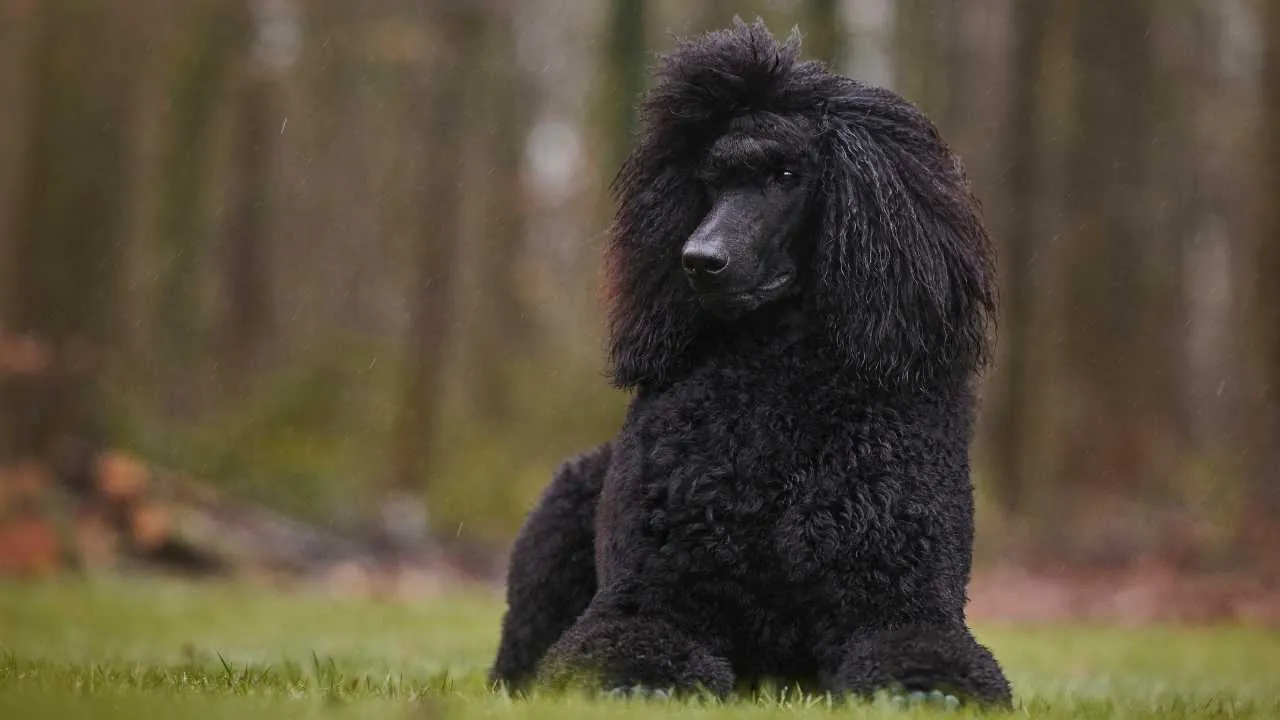
Graceful, brainy, and endlessly versatile, the Poodle is among the best therapy dog breeds. Originating in Germany as a water retriever, the breed quickly evolved into a symbol of sophistication in France. According to the AKC, the Standard Poodle is energetic, confident, and highly intelligent.
Poodles come in three sizes, Standard, Miniature, and Toy, ranging from about 10 to 24 inches tall and 6 to 70 pounds in weight. What truly distinguishes the Poodle is its sharp intellect, trainability, and keen emotional sensitivity.
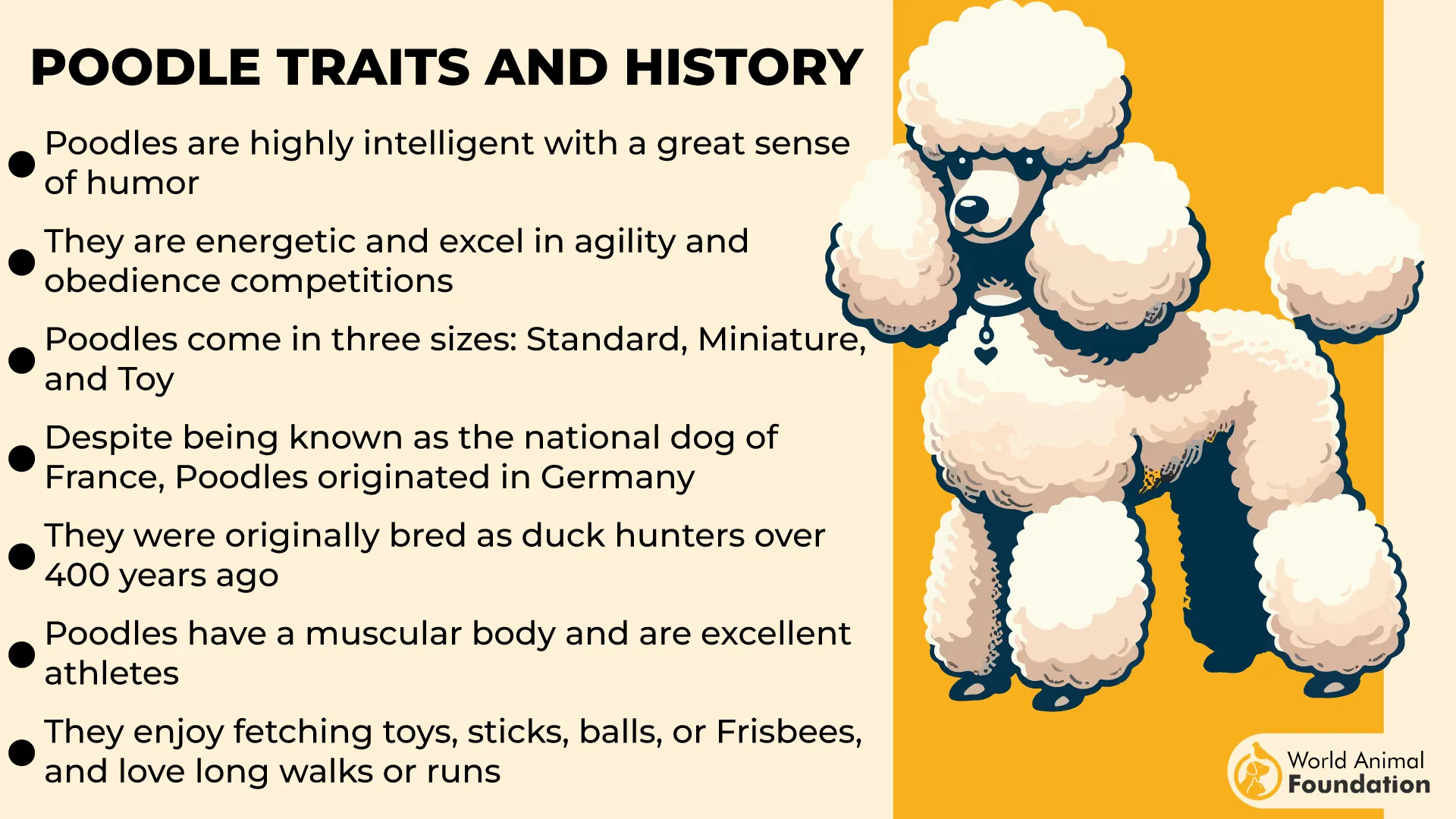
These dogs are quick to recognize and respond to human emotions, making them exceptional companions for individuals struggling with anxiety, depression, or trauma. Their hypoallergenic coats also make them suitable for therapy settings where allergy concerns are a factor.
Care Needs
Poodles are relatively high-maintenance when it comes to grooming. Their dense, curly coats require brushing several times a week to prevent matting, and they benefit from professional grooming every 4–6 weeks. These dogs are also highly active and need regular physical exercise and mental stimulation.
Daily walks, play sessions, and puzzle toys will keep them content and well-balanced. On the health front, they may be prone to hip dysplasia and eye disorders, so routine vet check-ups are essential. Nutritionally, a balanced diet based on their size and activity level is recommended, along with proper dental care to maintain oral health.
Fun Fact: The iconic Poodle haircut wasn’t just for style, it was designed to protect their joints and vital organs while retrieving in cold water.
2. Havanese
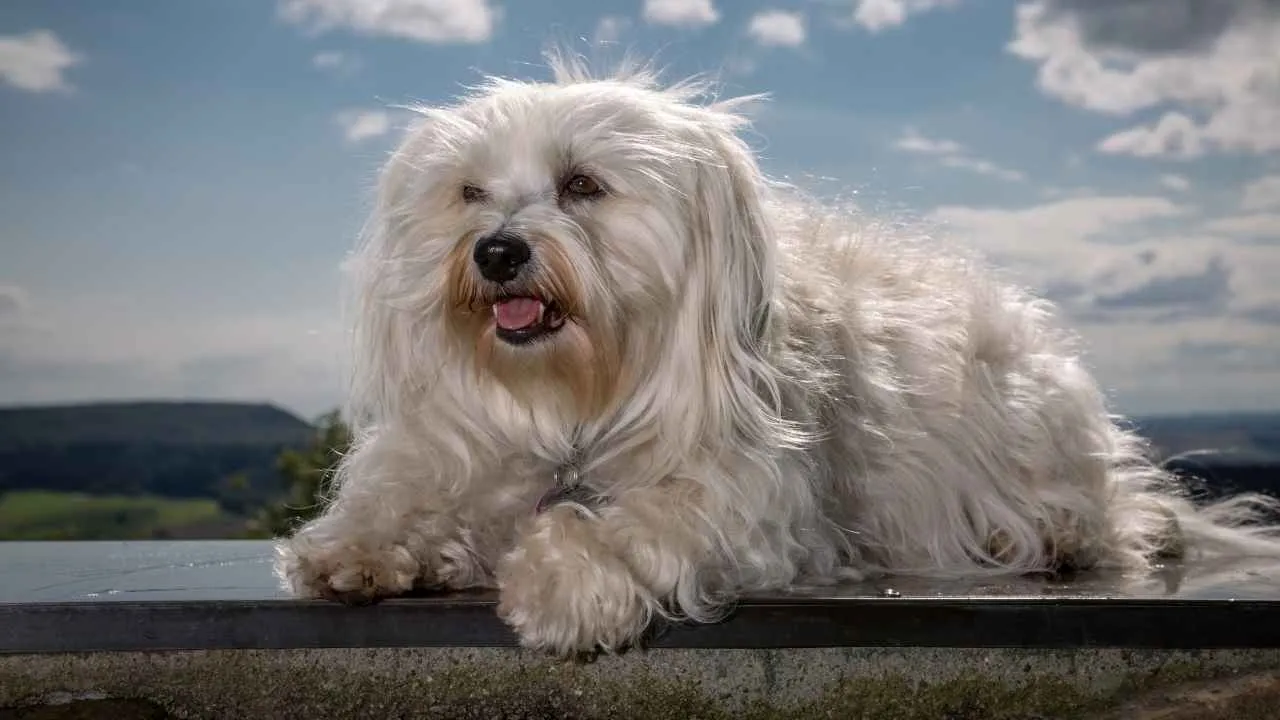
The Havanese, affectionately nicknamed the “Velcro dog” for their devotion to their humans, is the only dog breed native to Cuba. Also known as the Havana Silk Dog, this cheerful and affectionate toy breed was once the preferred lapdog of Cuban aristocracy.
Standing 10 to 15 inches tall and weighing between 10 and 15 pounds, the Havanese has a compact yet sturdy build. Their most distinguishing features include a luxuriously long, silky coat that comes in a variety of colors, from white and cream to chocolate and blue, and large, expressive eyes that radiate warmth.
A hypoallergenic breed, the Havanese is ideal for those sensitive to pet dander. Their charming looks and naturally social temperament make them excellent therapy dogs, particularly in environments such as hospitals, schools, or senior homes.
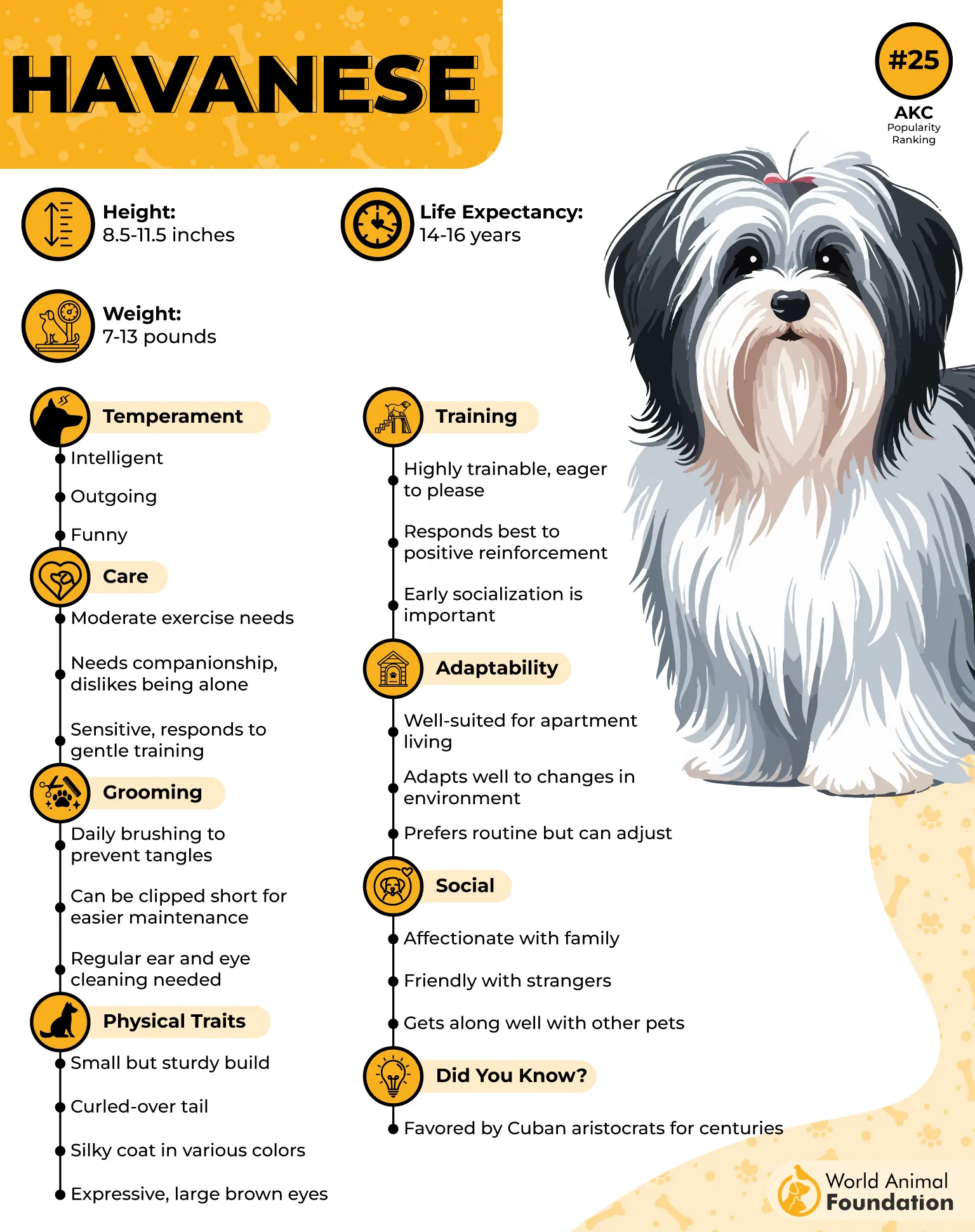
Care Needs
Havanese thrive on companionship and are happiest when surrounded by loved ones. PetMD reports that Havanese are highly intelligent dogs, which makes them fairly easy to train. Their exercise needs are moderate, about 30 minutes to an hour daily, split between short walks and playful indoor activities. Because of their small size, care should be taken not to overexert them, especially in puppyhood.
Grooming is vital; their fine coat requires brushing several times a week to avoid tangling and matting. Monthly baths and regular trimming help maintain coat health. Additionally, their eyes and ears should be cleaned routinely to prevent irritation or infection. Gentle training from an early age reinforces their natural sociability.
Fun fact: The Havanese is not only Cuba’s national dog, but they’ve also been beloved companions to historical figures and were once traded as prized gifts among nobility.
3. Bernese Mountain Dog
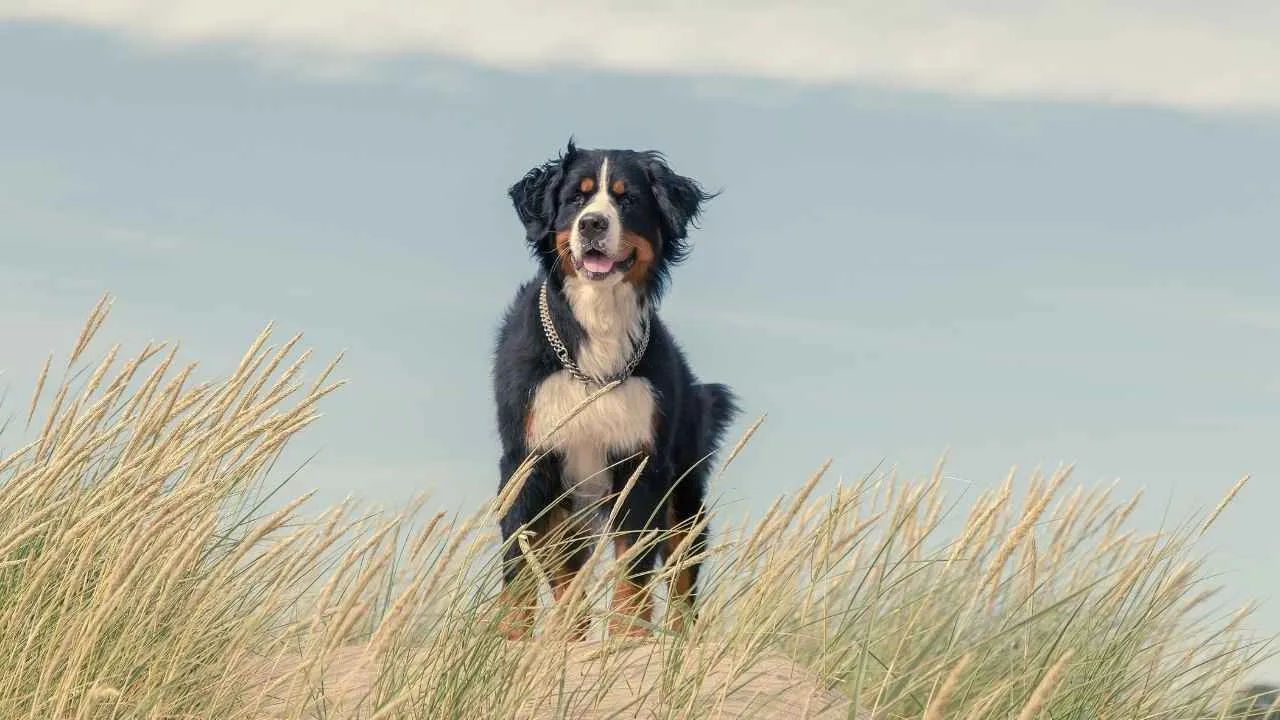
Also known as the Berner Sennenhund, the Bernese Mountain Dog hails from the snowy regions of Switzerland, where it originally worked as a farm dog, pulling carts and driving cattle. With their gentle temperament and striking tri-color coats of black, rust, and white, Berners exude a calm temperament ideal for therapeutic settings.
Their affectionate nature and love for human interaction make them superb candidates for therapy work, particularly in schools, hospitals, and senior care homes. Adult males typically stand between 25 and 27.5 inches tall and weigh 80 to 115 pounds, while females are slightly smaller.
While not hypoallergenic, their soft, thick double coat and expressive eyes add to their comforting charm.
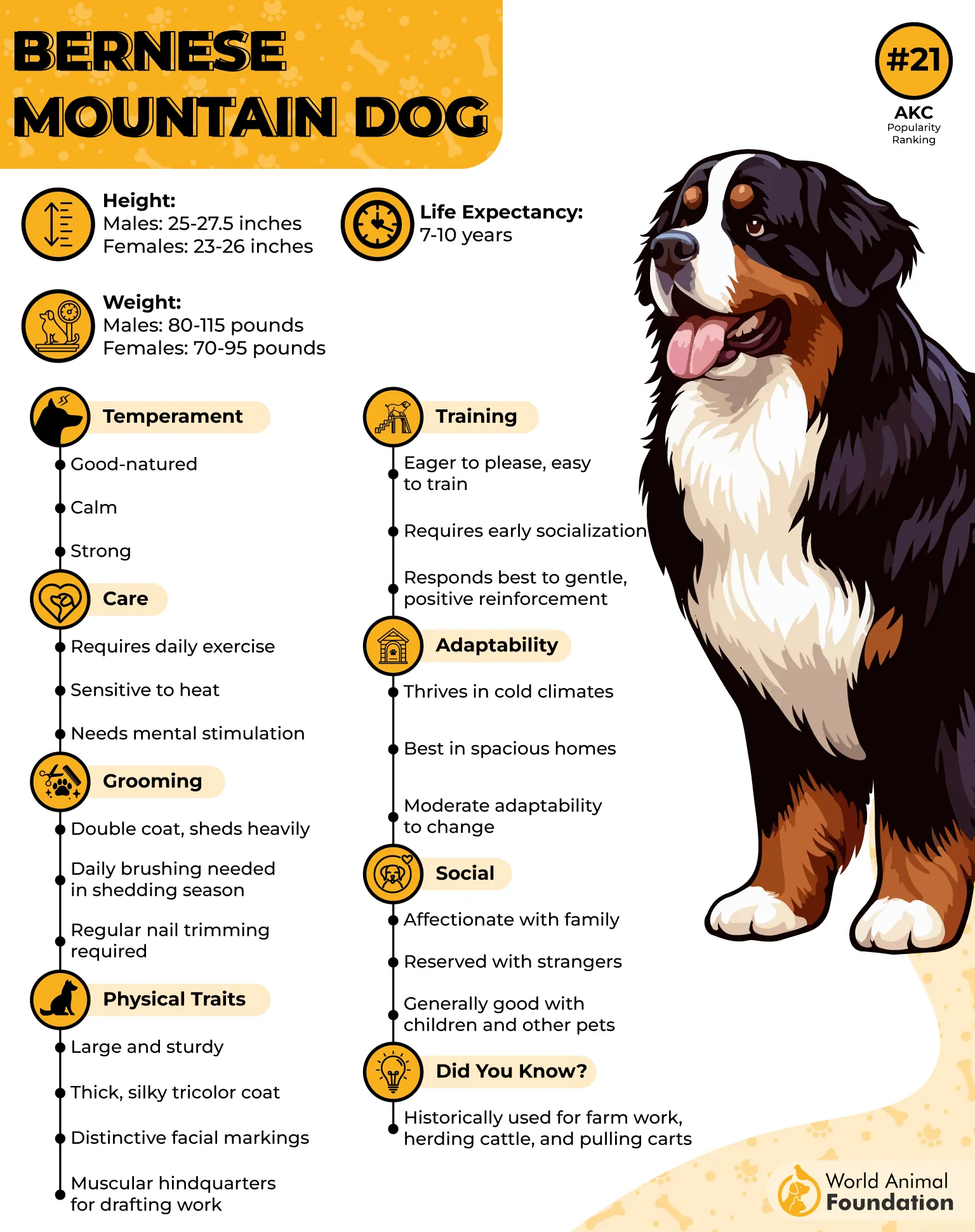
Care Needs
These dogs thrive on companionship and do best with families who can spend ample time with them. Britannica notes that while the Bernese Mountain Dog is among the more active giant breeds, it is still relatively low-energy compared to many other dog breeds. They require daily exercise but not intense activity; moderate walks and play sessions will suffice.
Due to their thick coats, regular grooming is essential to manage shedding. They can be prone to joint issues and may not tolerate heat well, so care should be taken during warmer months. Early socialization and training are recommended to shape their gentle personalities into confident, well-mannered therapy partners.
Fun Fact: Berners are known for their “huggability,” making them beloved by children and adults alike during therapy visits.
4. Bichon Frise
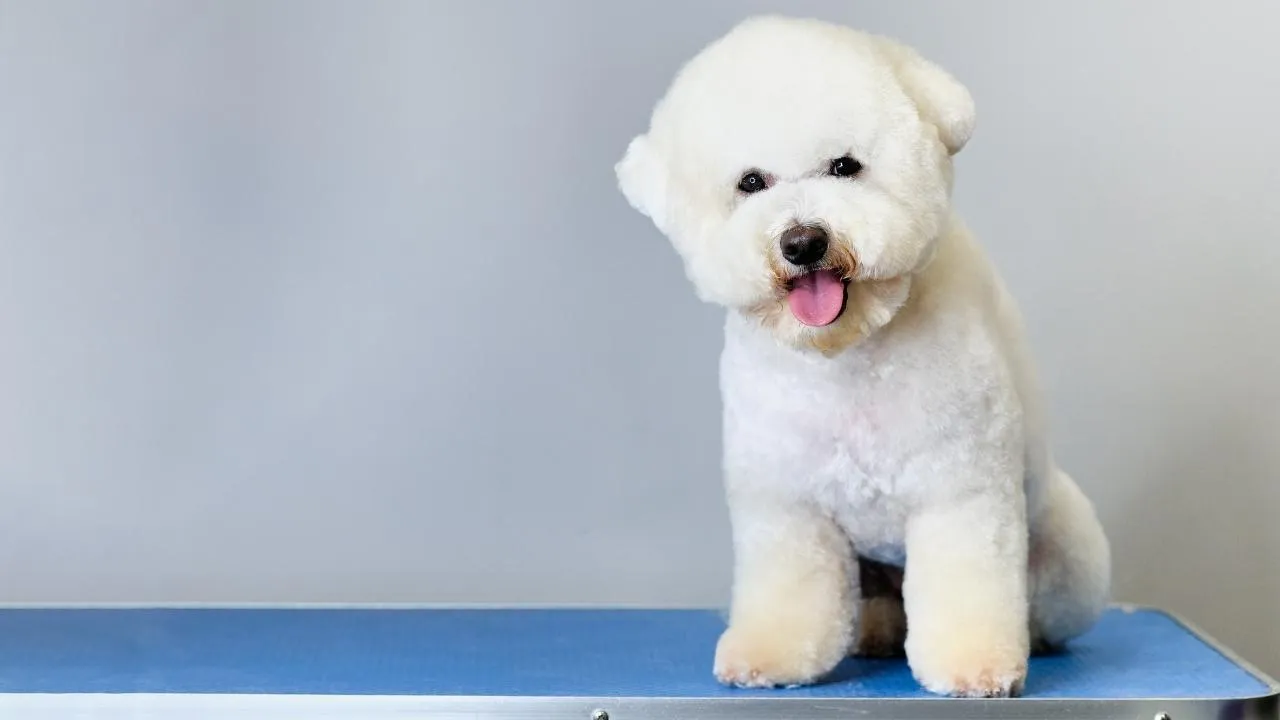
The Bichon Frise, also known as the “curly lap dog”, is a small yet sturdy breed originating from Spain. Purina describes the Bichon Frise as a cheerful, fluffy dog from the non-sporting group, with a toy-like and irresistibly cute appearance. These affectionate companions stand about 9.5 to 11.5 inches tall and typically weigh between 12 to 18 pounds.
Prized for their long, plush, curly coats, they come in various shades of white blended with apricot, cream, or buff. With their sweet expression, hypoallergenic coat, and a personality full of cheer, Bichons are often considered one of the best breeds for therapeutic settings.
Their temperament is a perfect blend of playfulness and calm, making them especially effective in environments like hospitals, classrooms, or elder care facilities. These social and intelligent dogs are also fast learners, qualities that make them become a therapy dog for training.
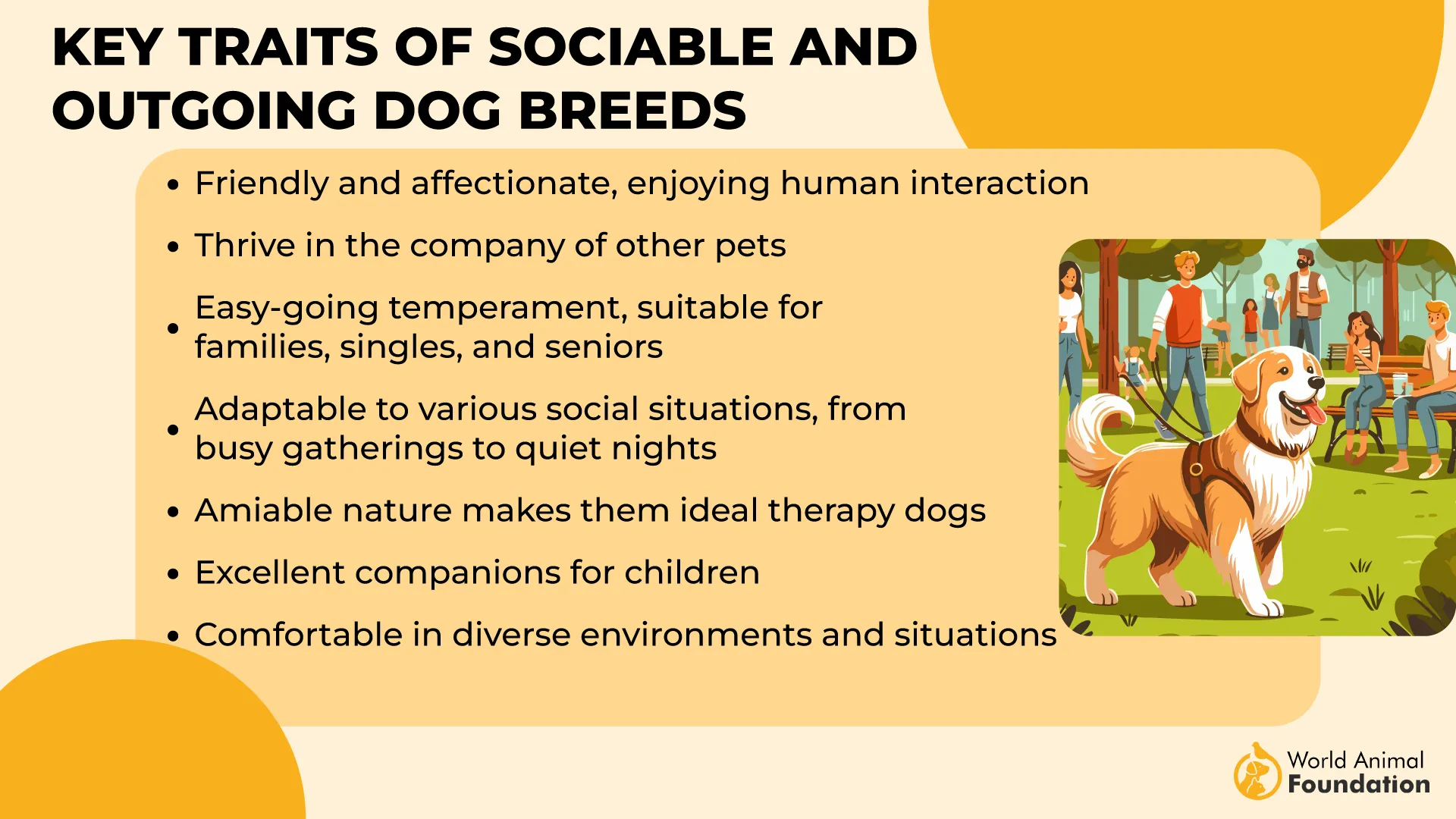
Care Needs
The Bichon Frise requires consistent grooming to maintain its signature fluffy coat. Daily brushing is essential to prevent mats and tangles, along with professional grooming every 4 to 6 weeks. Regular dental hygiene is crucial, as this breed is prone to early tooth loss and gum disease.
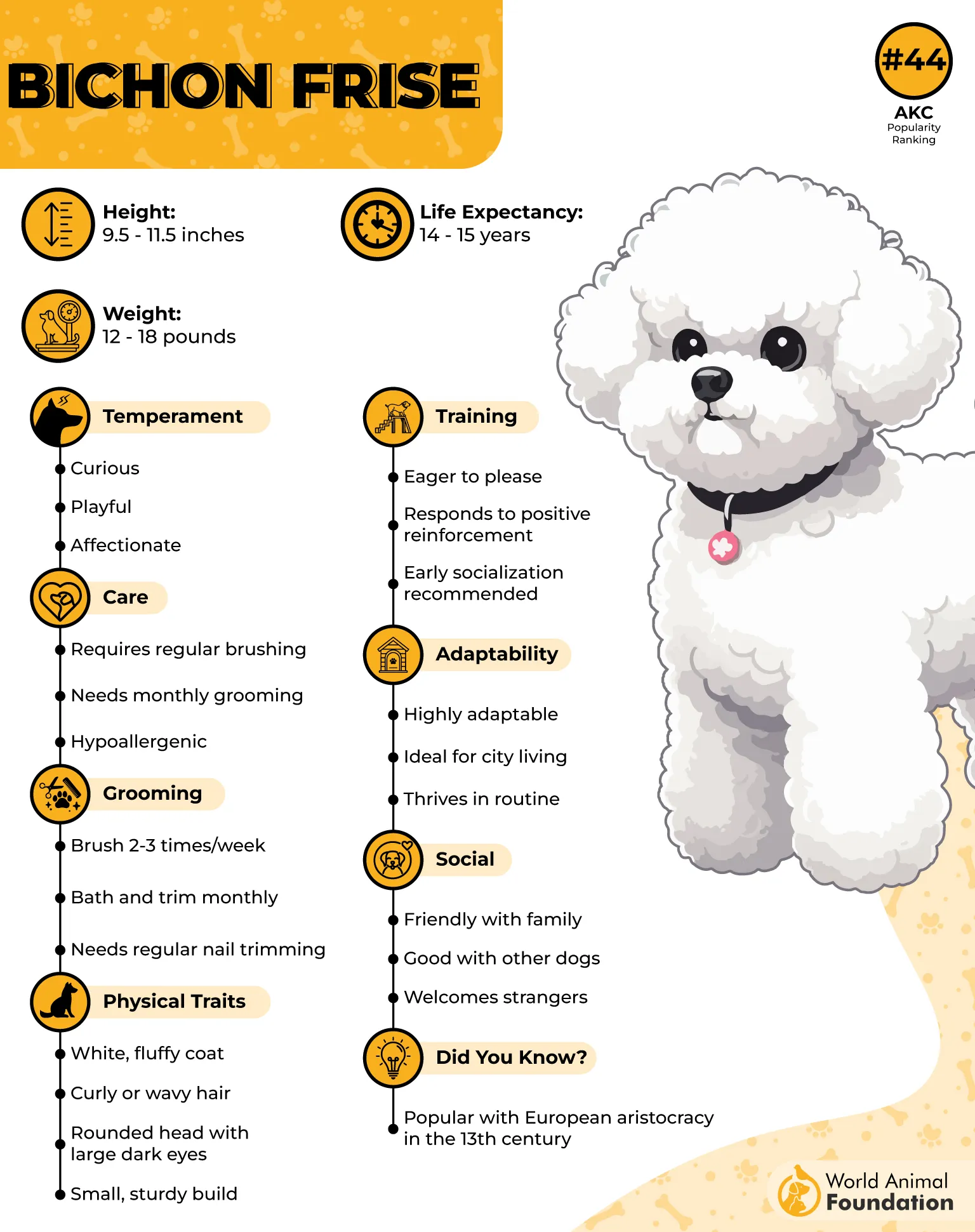
Ear cleaning should be performed weekly to reduce the risk of infections, and routine eye care helps manage tear staining. Veterinarians recommend patella, hip, and ophthalmologic evaluations to monitor health. Though generally hardy, Bichons can be susceptible to allergies, bladder issues, and cataracts if not properly cared for.
Fun Fact: The Bichon Frise’s gentle and comforting demeanor makes them a popular choice for therapy dog visits in hospitals and disaster-affected areas.
5. Great Pyrenees
The Great Pyrenees, also known as the Pyrenean Mountain Dog, is a majestic breed originally developed in France to protect livestock on snowy mountain slopes. With their commanding presence, thick white coat (often marked with touches of gray, tan, or reddish-brown), and a serene demeanor, these dogs offer both physical strength and emotional warmth.
Males typically stand between 27 and 32 inches tall and weigh up to 150 pounds, while females are slightly smaller. Known for their calm, affectionate, and patient temperament, Pyrs are increasingly recognized for their potential as therapy and service animals, offering a gentle, grounding presence that can uplift individuals in hospitals, schools, and therapy sessions.
Care Needs
Despite their voluminous coats, Great Pyrenees require surprisingly moderate grooming. Their double-layered coat is naturally dirt- and tangle-resistant. Weekly brushing with a pin or slicker brush helps control the seasonal shedding, often described as a “snowstorm” by seasoned owners.
Their nails should be kept trimmed to avoid discomfort, and regular dental hygiene is essential, using dog-specific toothpaste. While not high-energy, they do need daily walks and room to roam to remain happy and mentally stimulated.
Fun Fact: One owner jokes that Great Pyrenees shed “after whelping, in honor of certain Druid festivals, and after you enter them in a show!”
6. Golden Retriever
Also known as the Yellow Retriever, this breed originated in Scotland during the 19th century and was initially bred for retrieving game from water and land. Renowned for their trustworthy and affectionate nature, Golden Retrievers are a popular choice among therapists seeking emotional support companions.
Their medium-length double coats shine in hues ranging from light to deep gold, complementing their expressive, friendly demeanor. Males typically stand 23 to 24 inches tall and weigh between 65 and 75 pounds, while females are slightly smaller, at 21.5 to 22.5 inches and 55 to 65 pounds, respectively.
These dogs are intelligent, gentle, and eager to please, qualities that make them exceptionally responsive to training. Their calm and empathetic disposition allows them to offer comfort in high-stress environments such as hospitals, schools, and care centers.
Care Needs
Golden Retrievers are active dogs from the Sporting group, requiring consistent daily exercise to prevent boredom and destructive behaviors. Ideal activities include long walks, bike rides, or canine sports like agility and obedience.
However, for rigorous exercise, consult a vet to avoid joint strain. Regular grooming is essential due to their dense coat, along with routine vet checkups, vaccinations, and hygiene maintenance.
Fun Fact: Golden Retrievers are so emotionally intuitive that many can sense distress in humans and will instinctively offer comfort through gentle contact.
7. Labrador Retriever
Labrador Retriever (also known as “Lab”) is one of the most cherished and dependable dog breeds, especially among therapists seeking a calm and people-friendly companion. Originating from Newfoundland and refined in the United Kingdom, Labs were initially bred as waterfowl retrievers.
Today, they are America’s most popular breed, admired for their gentle demeanor, intelligence, and adaptability. Male Labradors stand about 22.5–24.5 inches tall and weigh between 65–80 pounds, while females measure 21.5–23.5 inches and weigh 55–70 pounds.
Their dense, short double coats come in yellow, black, or chocolate, and their affectionate, loyal personalities make them ideal for therapy work.
Care Needs
Labradors thrive on physical activity and mental stimulation. Daily walks, play sessions, and interactive tasks are essential to prevent restlessness or destructive behavior. They shed heavily year-round, so regular brushing, especially during seasonal changes, is important.
Their love for water requires special ear care to prevent infections; cleaning their ears every few weeks is recommended. Labs also need early socialization and proper training to channel their exuberant energy into calm and composed behavior. Positive reinforcement is particularly effective with this intelligent breed.
Fun Fact: Labs are not only popular therapy dogs but also excel as guide dogs, search-and-rescue partners, and emotional support animals due to their trainability and even temperament.
8. Cavalier King Charles Spaniel
Also known simply as the “Cavalier” or “Cavalier Spaniel,” this breed was originally developed in England as a lapdog for nobility and remains one of the most affectionate companion breeds today. With its distinct feathered ears, large expressive eyes, and luxuriously silky coat, often found in colors like Blenheim, ruby, tricolor, or black and tan, the Cavalier exudes elegance and warmth.
Standing about 12 to 13 inches tall and weighing between 13 to 18 pounds, they are ideal in size for close physical comfort, making them good therapy dogs.
Care Needs
Cavalier King Charles Spaniels thrive on human interaction and require ample affection and companionship. Their long, silky coat demands regular brushing, at least three to four times a week, to prevent tangles and matting, especially around the ears and legs.
Regular vet check-ups are important due to breed-specific issues such as heart conditions and ear infections. While they enjoy moderate daily exercise, Cavaliers are equally content cuddling on a couch or sitting quietly with clients during therapy sessions. Their sociable nature means they don’t do well with long periods of isolation.
Fun Fact: Many Cavalier Spaniels who once competed in dog shows later serve as successful Animal Assisted Therapy dogs due to their calm, affectionate temperament.
9. Border Collie
Also known as the “Scotch Sheep Dog,” the Border Collie is a renowned herding breed that originated in the borderlands between Scotland and England. With a lithe frame and unmatched agility, this breed stands 18 to 22 inches tall and weighs between 28 and 48 pounds.
It sports a dense double coat, either rough or smooth, and is commonly seen in colors like black, red, blue merle, or tricolor. With its bright, intelligent eyes and unrelenting energy, the Border Collie is one of the most mentally sharp breeds, often excelling in service roles across physical, psychiatric, and medical support.
Care Needs
Border Collies thrive on a high-quality diet, whether commercial or home-prepared with veterinary guidance. Portion control is crucial, as this breed can be prone to weight gain, especially if their high energy isn’t matched with sufficient exercise.
Treats should be used sparingly and training-minded. Fresh, clean water must be accessible at all times. Daily physical and mental stimulation is essential to prevent behavioral issues, and routine vet checkups will help monitor their weight and overall health.
Fun Fact: Border Collies are among the top service dog breeds, known for their success with PTSD support and therapy roles.
10. Pomeranian
A fluffy bundle of charm, the Pomeranian is a toy breed originally hailing from the Pomerania region of modern-day Germany and Poland. They become great therapy dogs. Despite their petite size, standing just 6 to 7 inches tall and weighing between 3 to 7 pounds, little dogs boast a bold, lively temperament and an eagerness to be at the center of attention.
Their thick double coat comes in a dazzling array of colors, from red and orange to black, cream, sable, and even blue. With an average lifespan of 12 to 16 years, Pomeranians are known for their intelligence, affection, and animated expressions.
Care Needs
These emotional support dogs require consistent grooming to keep their dense, luxurious coat healthy and free from matting. Their long fur is prone to tangles, especially in humid conditions, which can lead to painful hot spots if left unattended.
Regular brushing, ideally several times a week, is essential, along with occasional professional grooming to maintain coat shape and hygiene. Their skin is sensitive, so be alert for any signs of irritation or sores. Due to their compact size, they adapt well to indoor living, but daily play or a short walk will satisfy their exercise needs.
Fun Fact: Pomeranians are not just adorable, they are highly intuitive and often provide emotional comfort to people with anxiety or stress.
Conclusion
Choosing the right canine companion can make a meaningful difference in therapeutic environments. While specific breeds like Pomeranians excel in providing emotional comfort, other potential therapy dogs, such as the German Shepherd, Yorkshire Terrier, and French Bulldog, also bring unique strengths to the table. These breeds can offer unwavering loyalty, affectionate personalities, or intuitive responsiveness, qualities that are particularly beneficial when supporting individuals with mental health disorders.
Before engaging in therapeutic work, it’s essential to pursue therapy dog certification through recognized therapy dog organizations. Certification ensures that the dog is trained to provide safe, consistent support and can perform tasks such as deep pressure therapy, which has shown positive effects in calming anxiety and grounding individuals during emotional distress. Whether you’re a therapist seeking the ideal breed or someone exploring the world of animal-assisted therapy, understanding the care needs and temperament of specific breeds will help you make an informed choice in this profoundly rewarding journey.


